ART NEWS:Jan.03
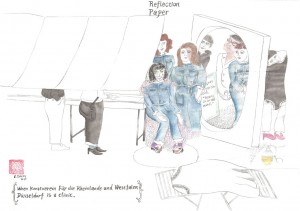 The exhibition “Reflection Paper” is a ‘clinic’ where abstract thoughts and emotions are brought together from Evelyn Taocheng Wang’s reading of a few writers in order to ‘try to be a literal woman and sew her own womb.’ With a slight homage and a little pretentiousness, the artist gathered this difficult and painful procedure from history, which tied together the intuition of searching with reaching toward freedom. “Reflection Paper”is a circle garden, inviting you for diagnosis on topics such as ‘living in the moment of now’ or ‘beauty is only in our mind’ as you count your breath, walking through the icy white lacquer. As the artist says “Since my artworks are failures, I left their aesthetics and compositions in the soil of meditation, and shall we say together: Today is a fragment”. This garden is protected with an old grandmother’s oversized flowery underpants. They are going to stop lengthy turbid speeches. They are going to repel the air of bad energy. They are going to kick out all the negative worries about the future. Info: Kunstverein für die Rheinlande und Westfalen, Düsseldorf, Grabbeplatz 4, Düsseldorf, Duration: 12/1-14/3/2021, Days & Hours: Tue-Sun 11:00-18:00, https://kunstverein-duesseldorf.de
The exhibition “Reflection Paper” is a ‘clinic’ where abstract thoughts and emotions are brought together from Evelyn Taocheng Wang’s reading of a few writers in order to ‘try to be a literal woman and sew her own womb.’ With a slight homage and a little pretentiousness, the artist gathered this difficult and painful procedure from history, which tied together the intuition of searching with reaching toward freedom. “Reflection Paper”is a circle garden, inviting you for diagnosis on topics such as ‘living in the moment of now’ or ‘beauty is only in our mind’ as you count your breath, walking through the icy white lacquer. As the artist says “Since my artworks are failures, I left their aesthetics and compositions in the soil of meditation, and shall we say together: Today is a fragment”. This garden is protected with an old grandmother’s oversized flowery underpants. They are going to stop lengthy turbid speeches. They are going to repel the air of bad energy. They are going to kick out all the negative worries about the future. Info: Kunstverein für die Rheinlande und Westfalen, Düsseldorf, Grabbeplatz 4, Düsseldorf, Duration: 12/1-14/3/2021, Days & Hours: Tue-Sun 11:00-18:00, https://kunstverein-duesseldorf.de
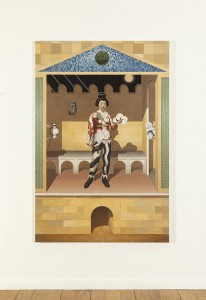 As is often the case, the title of Christian Hidaka’s exhibition, “Siparium”, which is also the title of one of the pictures on view, offers a meaningful clue for unravelling the interplay of tracks set up by Christian Hidaka. In Latin, the siparium refers to the stage curtain, which was usually painted, acting both as a backdrop and set in antique theatre and the commedia dell’arte. A way of recalling that, in one and the same movement, the British artist imagines painting and theatre as special areas of representation. Through this analogy between pictorial and theatrical spaces, he seems above all to be trying to map a mental space (an imagination, or imaginary space) informed by a set of complex relations and dynamics. A provisional area, forever being reshaped and re-configured by logical systems of collage, association, and hybridization. Without losing any sleep over dogmas and by surfing with disconcerting ease between different cultural arenas, Hidaka works at geographically and geometrically off-centering things—a poetics of anachronism. Info: Michel Rein Gallery, Washington rue 51A, Brussels, Duration: 16/1-27/2/2021, Days & Hours: Wed-Sat 10:00-18:00, http://michelrein.com
As is often the case, the title of Christian Hidaka’s exhibition, “Siparium”, which is also the title of one of the pictures on view, offers a meaningful clue for unravelling the interplay of tracks set up by Christian Hidaka. In Latin, the siparium refers to the stage curtain, which was usually painted, acting both as a backdrop and set in antique theatre and the commedia dell’arte. A way of recalling that, in one and the same movement, the British artist imagines painting and theatre as special areas of representation. Through this analogy between pictorial and theatrical spaces, he seems above all to be trying to map a mental space (an imagination, or imaginary space) informed by a set of complex relations and dynamics. A provisional area, forever being reshaped and re-configured by logical systems of collage, association, and hybridization. Without losing any sleep over dogmas and by surfing with disconcerting ease between different cultural arenas, Hidaka works at geographically and geometrically off-centering things—a poetics of anachronism. Info: Michel Rein Gallery, Washington rue 51A, Brussels, Duration: 16/1-27/2/2021, Days & Hours: Wed-Sat 10:00-18:00, http://michelrein.com
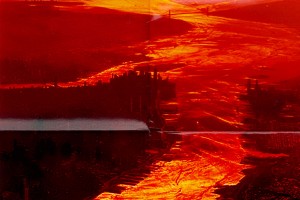 The works in the exhibition, entitled “The Space Between Classrooms” respond to the limitations of learning within the prescribed architectural and structural parameters of an archetypal school setting. Farid takes as a starting point the prototype for schools that Alfred Roth designed for Kuwait’s Ministry of Public Works during the late 1960s, a period of rapid modernization for the newly flourishing oil state. Roth, a celebrated Swiss modernist architect, developed prefabricated schools that were to be replicated in each district across the country. From his initial report on the existing provision of schools, which opens the exhibition, The Space Between Classrooms compares the uniformity of Roth’s architecture and the introduction of a modern education system in Kuwait with expanded art practices from Latin America, Southwest Asia and North Africa. These works draw on radical forms of pedagogy and communication as tools for unlearning, exploring how institutionally engineered values might govern imagination. Works by: Atelier Aziz Alqatami, Mohamed Bourouissa, Olga Casellas and Marco Abarca, Khalid al Gharaballi, Jumana Manna and Haig Aivazian, Nuria Montiel, Abdullah Al-Mutairi, Oscar Murillo, Gala Porras-Kim, Alfred Roth, Cecilia Vicuña. Info: Curator: Alia Farid, Swiss Institute, 38 St Marks Pl, New York, Duration: 18/1-20/4/2021, Days & Hours: Wed-Fri 14:00-20:00, Sat 12:00-20:00, Sun 12:00-18:00, www.swissinstitute.net
The works in the exhibition, entitled “The Space Between Classrooms” respond to the limitations of learning within the prescribed architectural and structural parameters of an archetypal school setting. Farid takes as a starting point the prototype for schools that Alfred Roth designed for Kuwait’s Ministry of Public Works during the late 1960s, a period of rapid modernization for the newly flourishing oil state. Roth, a celebrated Swiss modernist architect, developed prefabricated schools that were to be replicated in each district across the country. From his initial report on the existing provision of schools, which opens the exhibition, The Space Between Classrooms compares the uniformity of Roth’s architecture and the introduction of a modern education system in Kuwait with expanded art practices from Latin America, Southwest Asia and North Africa. These works draw on radical forms of pedagogy and communication as tools for unlearning, exploring how institutionally engineered values might govern imagination. Works by: Atelier Aziz Alqatami, Mohamed Bourouissa, Olga Casellas and Marco Abarca, Khalid al Gharaballi, Jumana Manna and Haig Aivazian, Nuria Montiel, Abdullah Al-Mutairi, Oscar Murillo, Gala Porras-Kim, Alfred Roth, Cecilia Vicuña. Info: Curator: Alia Farid, Swiss Institute, 38 St Marks Pl, New York, Duration: 18/1-20/4/2021, Days & Hours: Wed-Fri 14:00-20:00, Sat 12:00-20:00, Sun 12:00-18:00, www.swissinstitute.net
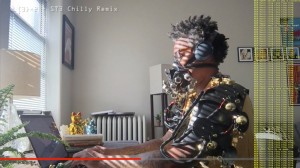 In the exhibition “not in, of, along, or relating to a line”, nine artists and art collectives employ technology for self-expression and self-fashioning. In making visible both the restrictions and the freedoms of digital culture, they explore how identities and histories are created, transformed, or invented. For some, technology is a means to an end: a memoir, a fictional history, an intimate view of a person’s life. Others interrogate the power relations of these same tools, from virtual gaming and ‘big data’ consumer portraits to facial recognition software. The artists appropriate technologies to narrate, alter, augment, or invent their identities and histories. The idea of individual context, of experiential relativity, threads together the works in this exhibition, and structures its form and its content. The visitor is invited to travel a branching, non-linear, virtual path through works by artists who explore the transformation of individual identity that digital tools and internet connectivity have co-produced in our lives. Artists: Addie Wagenknecht, Cao Fei, Eva and Franco Mattes, Lee Blalock, Maryam Al Hamra, Micha Cárdenas, Ramin Haerizadeh, Rokni Haerizadeh, Hesam Rahmanian, Sophia Al-Maria, Zach Blas. Info: Curator: Dr. Heather Dewey-Hagborg, NYU Abu Dhabi (NYUAD) Art Gallery, Saadiyat Island, Abu Dhabi, Duration: 20/110/7/2021, Days & Hours: Mon-Sat 12:00-20:00, www.nyuad-artgallery.org
In the exhibition “not in, of, along, or relating to a line”, nine artists and art collectives employ technology for self-expression and self-fashioning. In making visible both the restrictions and the freedoms of digital culture, they explore how identities and histories are created, transformed, or invented. For some, technology is a means to an end: a memoir, a fictional history, an intimate view of a person’s life. Others interrogate the power relations of these same tools, from virtual gaming and ‘big data’ consumer portraits to facial recognition software. The artists appropriate technologies to narrate, alter, augment, or invent their identities and histories. The idea of individual context, of experiential relativity, threads together the works in this exhibition, and structures its form and its content. The visitor is invited to travel a branching, non-linear, virtual path through works by artists who explore the transformation of individual identity that digital tools and internet connectivity have co-produced in our lives. Artists: Addie Wagenknecht, Cao Fei, Eva and Franco Mattes, Lee Blalock, Maryam Al Hamra, Micha Cárdenas, Ramin Haerizadeh, Rokni Haerizadeh, Hesam Rahmanian, Sophia Al-Maria, Zach Blas. Info: Curator: Dr. Heather Dewey-Hagborg, NYU Abu Dhabi (NYUAD) Art Gallery, Saadiyat Island, Abu Dhabi, Duration: 20/110/7/2021, Days & Hours: Mon-Sat 12:00-20:00, www.nyuad-artgallery.org
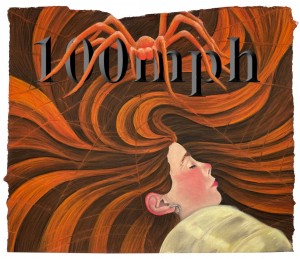 Rebecca Ackroyd’s solo exhibition “100mph” has brought the walls of the Peres Projects gallery space closer, scaffolding obscures the view through the windows, and Ackroyd’s paintings hang from these temporary, supportive structures against cloudy, translucent dust sheets. These structures make the incongruous suggestion of impermanence, in cityscapes where those frames are the urban’s most enduring symbol of continual growth and change. In 100mph we step into the building site where her works stage processes of both demolition and construct new formulations. Rebecca Ackroyd is interested in the twinned experiences of personal and collective memory, and how we reconcile their dissonance in our lives. The works in this exhibition deal with personal psychology, through an exploration of dreams and through strategies of compartmentalization – both tools for processing and digesting our experiences. In her second exhibition at Peres Projects, Ackroyd architecturally intervenes in the space with semitransparent, plastic dividers, creating pods that isolate both the works and the viewer. In navigating the installation, we are alone with each work, given space to experience the drawings privately. Isolation diminishes stimulation, the busyness of the street outside momentarily blurred, and allows for a more intimate encounter. Info: Peres Projects, Karl-Marx-Allee 82, Berlin, Duration: 22/1-26/2/2021, Days & Hours: Mon-Fri 11:00-18:00, https://peresprojects.com
Rebecca Ackroyd’s solo exhibition “100mph” has brought the walls of the Peres Projects gallery space closer, scaffolding obscures the view through the windows, and Ackroyd’s paintings hang from these temporary, supportive structures against cloudy, translucent dust sheets. These structures make the incongruous suggestion of impermanence, in cityscapes where those frames are the urban’s most enduring symbol of continual growth and change. In 100mph we step into the building site where her works stage processes of both demolition and construct new formulations. Rebecca Ackroyd is interested in the twinned experiences of personal and collective memory, and how we reconcile their dissonance in our lives. The works in this exhibition deal with personal psychology, through an exploration of dreams and through strategies of compartmentalization – both tools for processing and digesting our experiences. In her second exhibition at Peres Projects, Ackroyd architecturally intervenes in the space with semitransparent, plastic dividers, creating pods that isolate both the works and the viewer. In navigating the installation, we are alone with each work, given space to experience the drawings privately. Isolation diminishes stimulation, the busyness of the street outside momentarily blurred, and allows for a more intimate encounter. Info: Peres Projects, Karl-Marx-Allee 82, Berlin, Duration: 22/1-26/2/2021, Days & Hours: Mon-Fri 11:00-18:00, https://peresprojects.com
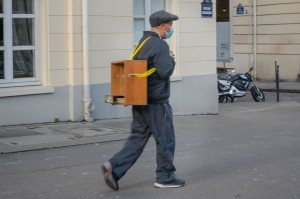 In his solo exhibition “La Señora de Las Nueces”, Abraham Cruzvillegas presents a set of sculptures, a series of monoprints and a video. The works are the result of a long term reflection about the material and cultural history of the Señor de las Limas, also known as Las Limas Monument, a sculpture dating back to 900-400 BCE, emblematic of Olmec culture. Entitled “La Señora de Las Nueces” a video in the exhibition shows the close-up of a woman’s hand using two stones to break a nut, then peeling it. The almost instinctive familiarity of gestures allowing the fruit to be opened is like a replay of the original discovery of the Olmec sculpture in the 1960s. Recorded by the artist, the short clip of the archeologist’s hand in action focuses the viewer’s attention on her movements. Info: Galerie Chantal Crousel, 10 rue Charlot, Paris, Duration: 23/1-27/2/2021, Days & Hours: Tue-Sat 10:00-18:00, www.crousel.com
In his solo exhibition “La Señora de Las Nueces”, Abraham Cruzvillegas presents a set of sculptures, a series of monoprints and a video. The works are the result of a long term reflection about the material and cultural history of the Señor de las Limas, also known as Las Limas Monument, a sculpture dating back to 900-400 BCE, emblematic of Olmec culture. Entitled “La Señora de Las Nueces” a video in the exhibition shows the close-up of a woman’s hand using two stones to break a nut, then peeling it. The almost instinctive familiarity of gestures allowing the fruit to be opened is like a replay of the original discovery of the Olmec sculpture in the 1960s. Recorded by the artist, the short clip of the archeologist’s hand in action focuses the viewer’s attention on her movements. Info: Galerie Chantal Crousel, 10 rue Charlot, Paris, Duration: 23/1-27/2/2021, Days & Hours: Tue-Sat 10:00-18:00, www.crousel.com
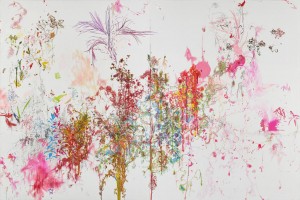 Xu Ning’s solo exhibition “Season – Letter” focuses on a selection of new works replete with strength and passion including a large-scale painting measuring over 3-meters. The title of this exhibition is eponymous to the title of the work that Xu Ning produced in the second year of her graduate studies at university. The work “Season – Letter” marked her first attempt in working with two conjoined large-scale canvases measuring approximately 2.6 x 1.9 meters each, with the size of the canvases themselves reflecting the vastness of nature. The artist mentions how the changes in the seasons have made her aware of the passage of time, encouraging her to question the meaning of human life, while at the same time instilling her with courage and moving her emotions. As such, she expresses a desire to convey its splendor to viewers in the way one would deliver a letter. Relative elements coexist within her work, such as East and West, abstraction and concreteness, delicacy and dynamism, elaborateness and fortuity, flat areas of the picture plane and the built-up texture of the paint, fields of color and blank white spaces, lines and colorfulness; creating a unique sense of balance and intensity. It is indeed possible to regard this as subconsciously having ties to the concept of Yin-Yang that forms a significant part of the philosophy of her homeland China. Info: Tomio Koyama Gallery, complex665 2F, 6-5-24, Minato-ku, Tokyo, Duration: 23/1-20/2/2021, Days & Hours: Tue-Sat 11:00-19:00, http://tomiokoyamagallery.com
Xu Ning’s solo exhibition “Season – Letter” focuses on a selection of new works replete with strength and passion including a large-scale painting measuring over 3-meters. The title of this exhibition is eponymous to the title of the work that Xu Ning produced in the second year of her graduate studies at university. The work “Season – Letter” marked her first attempt in working with two conjoined large-scale canvases measuring approximately 2.6 x 1.9 meters each, with the size of the canvases themselves reflecting the vastness of nature. The artist mentions how the changes in the seasons have made her aware of the passage of time, encouraging her to question the meaning of human life, while at the same time instilling her with courage and moving her emotions. As such, she expresses a desire to convey its splendor to viewers in the way one would deliver a letter. Relative elements coexist within her work, such as East and West, abstraction and concreteness, delicacy and dynamism, elaborateness and fortuity, flat areas of the picture plane and the built-up texture of the paint, fields of color and blank white spaces, lines and colorfulness; creating a unique sense of balance and intensity. It is indeed possible to regard this as subconsciously having ties to the concept of Yin-Yang that forms a significant part of the philosophy of her homeland China. Info: Tomio Koyama Gallery, complex665 2F, 6-5-24, Minato-ku, Tokyo, Duration: 23/1-20/2/2021, Days & Hours: Tue-Sat 11:00-19:00, http://tomiokoyamagallery.com
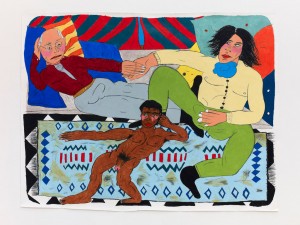 For his solo show exhibition ”YES ! AÏ AÏ AÏ AÏ AÏ AÏ AÏ … AM”, Soufiane Ababri has taken as a point of departure a collection of critical essays by the 20th-century French thinker Didier Eribon titled Heresies: Essays on the theory of sexuality, in which Eribon posits that the gay community constructs an identity for itself through the literature produced by a “family” of gay writers and thinkers over the centuries. The artist’s desire to construct a historical family sees him conjuring up a pantheon of gay writers and artists whose intellect has changed the course of human history and development, despite their outsider status. Figures as disparate as Michel Foucault, Glenn Ligon, Allen Ginsberg, Jean Genet, André Gide populate Ababri’s works in the artist’s signature naïf style, their homosexuality the thread that connects them. The kind of militancy proposed here by Ababri is, in a sense, not political activism but art-historical, addressing the imbalances in the way history and art history have been written. The presence of these seminal historical figures form only part of the artist’s resistance, for Ababri’s method of working is also deliberately in opposition to established norms. Info: Mendes Wood DM, 13 Rue des Sablons / Zavelstraat, Brussels, Duration: 23/1-27/2/2021, Days & Hours: Tue-Sat 11:00-19:00, https://mendeswooddm.com
For his solo show exhibition ”YES ! AÏ AÏ AÏ AÏ AÏ AÏ AÏ … AM”, Soufiane Ababri has taken as a point of departure a collection of critical essays by the 20th-century French thinker Didier Eribon titled Heresies: Essays on the theory of sexuality, in which Eribon posits that the gay community constructs an identity for itself through the literature produced by a “family” of gay writers and thinkers over the centuries. The artist’s desire to construct a historical family sees him conjuring up a pantheon of gay writers and artists whose intellect has changed the course of human history and development, despite their outsider status. Figures as disparate as Michel Foucault, Glenn Ligon, Allen Ginsberg, Jean Genet, André Gide populate Ababri’s works in the artist’s signature naïf style, their homosexuality the thread that connects them. The kind of militancy proposed here by Ababri is, in a sense, not political activism but art-historical, addressing the imbalances in the way history and art history have been written. The presence of these seminal historical figures form only part of the artist’s resistance, for Ababri’s method of working is also deliberately in opposition to established norms. Info: Mendes Wood DM, 13 Rue des Sablons / Zavelstraat, Brussels, Duration: 23/1-27/2/2021, Days & Hours: Tue-Sat 11:00-19:00, https://mendeswooddm.com
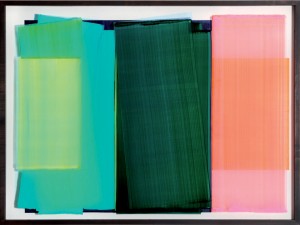 Always remaining faithful to his very own and unique technique, which is reverse painting behind glass, Julio Rondo’s new works in the exhibition “The Brake” range between abstract painting and objectuality. The painter’s mission here is the result of a meticulous planning of the used technique, means and composition preceding the process of creating the picture, that does not correspond to an expressive, spontaneous act of painting. By using his personal, visual archive, Rondo creates impressive documents of a life with fast-drying acrylic paint, that are able to activate feelings, thoughts and perceptions without mimetically depicting his environment. The airbrush streaks from earlier works disappear and give way for soft, vibrant and geometric color fields which are released from the rigidity of their form by the medium of the order. These colour fields create a three-dimensional liveliness within the artwork. Most likely to a memory never being identical with objective experiences in its coloring, Rondo’s new works are not merely the result of the natural artistic intensification or development, but rather an energy that is existing in the pictorial space. Info: Bendana | Pinel Art Contemporain, 4 rue du Perche, Paris, Duration: 23/1-20/3/2021, Days & Hours: Tue-Sat 11:00-19:00, www.bendana-pinel.com
Always remaining faithful to his very own and unique technique, which is reverse painting behind glass, Julio Rondo’s new works in the exhibition “The Brake” range between abstract painting and objectuality. The painter’s mission here is the result of a meticulous planning of the used technique, means and composition preceding the process of creating the picture, that does not correspond to an expressive, spontaneous act of painting. By using his personal, visual archive, Rondo creates impressive documents of a life with fast-drying acrylic paint, that are able to activate feelings, thoughts and perceptions without mimetically depicting his environment. The airbrush streaks from earlier works disappear and give way for soft, vibrant and geometric color fields which are released from the rigidity of their form by the medium of the order. These colour fields create a three-dimensional liveliness within the artwork. Most likely to a memory never being identical with objective experiences in its coloring, Rondo’s new works are not merely the result of the natural artistic intensification or development, but rather an energy that is existing in the pictorial space. Info: Bendana | Pinel Art Contemporain, 4 rue du Perche, Paris, Duration: 23/1-20/3/2021, Days & Hours: Tue-Sat 11:00-19:00, www.bendana-pinel.com
